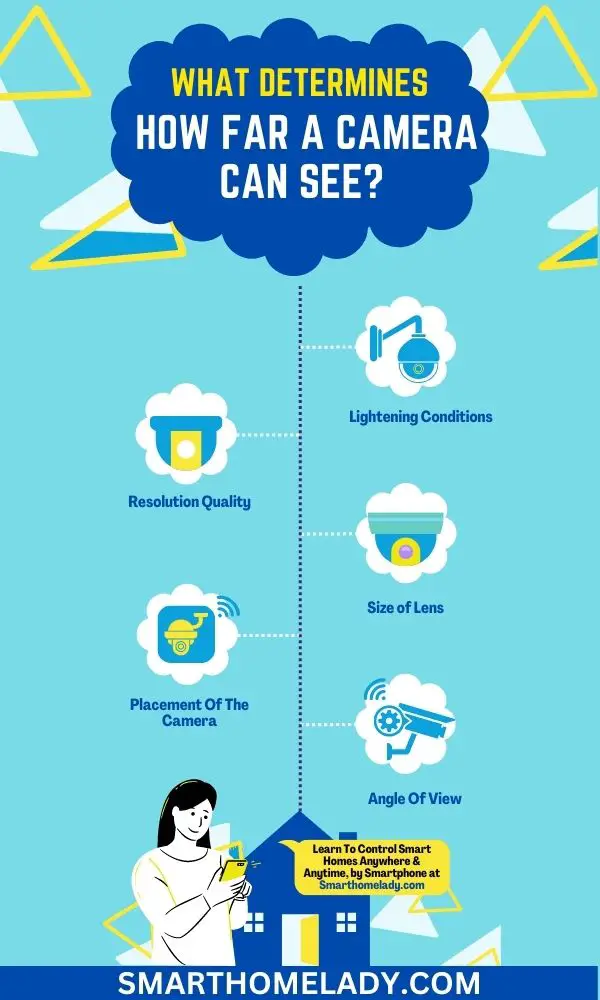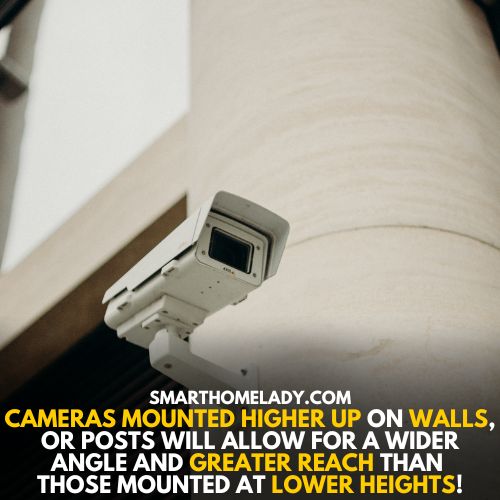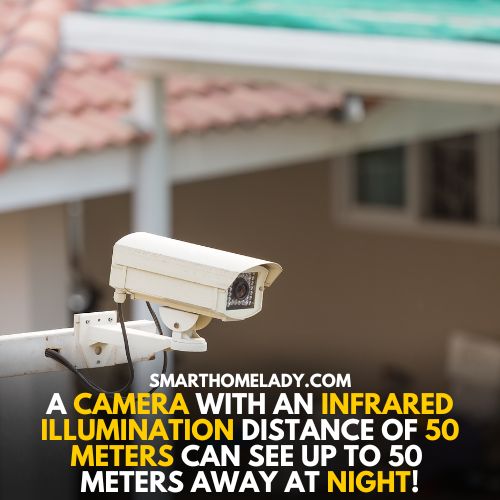As a seasoned smart security camera user, I’ve realized that the distance a camera can see is crucial to ensuring the safety of my home and loved ones.
But what determines this range? Is it simply the camera’s lens, or is there more to it?
Join me as we explore the fascinating science behind what determines how far a camera can see and how it impacts the effectiveness of your home security system.

6 Factors Determines How Far A Camera Can See
Security cameras are used to monitor and observe areas for safety and security purposes. But how far can these cameras actually see? This question has many factors that need to be considered when determining the range of a security camera.
The amount of light available, the camera’s resolution and the lens’s size are all factors that can affect how far a security camera can see.
1. Lightening Conditions Determine Camera’s Range
The amount of light available is one factor to consider when determining how far a security camera can see.
If there is not enough light, the image may be too blurry or dark to make out any details.
For example, if there are no street lights in an area, the camera won’t be able to pick up any details beyond 10 meters.
If there is no ambient light present, such as at night, the camera will require an infrared illuminator to provide illumination for the camera to operate. The range of the infrared illuminator depends on its power output and how wide it is set to emit light.
| Lighting Condition | Effect on Image Quality | Additional Information |
|---|---|---|
| Not enough light | Blurry or dark image, details beyond 10 meters may not be visible | Lack of street lights or other sources of ambient light can impact image quality. |
| No ambient light | The range of the infrared illuminator depends on its power output and width of light emission. | The range of the infrared illuminator depends on its power output and width of light emission. |
| Too much light | Glare or washed-out areas, difficult-to-identify objects or people | Bright lighting can increase visibility range and contrast, but overexposure can result in a washout. |
Additionally, too much light could cause glare or wash out certain parts of the image, making it difficult to identify objects or people in the frame.
Bright lighting, on the other hand, can increase a security camera’s visibility range by providing more excellent contrast between objects and their backgrounds. This allows for more accurate identification of what is being observed.
However, if the lighting is too bright, it can result in a washout, which reduces visibility and accuracy.
Pro Tip: For a security camera to perform optimally, it should be placed in a location with adequate lighting with minimal interference from sunlight or other bright light sources. This will help ensure that objects are properly illuminated so they can be identified more easily by the camera’s image sensor and processor.
2. Resolution Quality
Another important factor to consider is the resolution of the camera. A higher resolution will allow more detail in an image, making it easier for someone viewing it to identify objects and people farther away from the camera.
Also, having a higher resolution will allow you to zoom in on an image without losing as much detail as you would with lower resolutions.
Higher-resolution cameras are also better at capturing movement from longer distances than lower-resolution cameras.
For instance, a 4K camera has a 3840 x 2160 pixels resolution. On the other hand, a standard HD camera has a resolution of only 1920 x 1080 pixels, which is far less than a 4K camera.
This difference in resolution quality is essential when considering what type of security camera you need for your specific application.
3. Size of Lens Determine Camera’s Range
Another important factor is the lens size used with the security camera. Larger lenses with a wide angle are able to capture more light which results in clearer images even at greater distances away from the camera.
On the other hand, a small lens with a narrow field of view won’t be able to see as far.
For example, if you have an 8-megapixel camera with a 5mm lens, it will be able to produce an image that’s about as clear as one taken by an 8-megapixel camera with a 3mm lens from twice as far away.
The right lens size and resolution combination can result in clear images even hundreds of feet away from the camera’s location.
4. Placement Of The Camera Determines the Camera’s Range
The placement of the camera is essential for determining how far it can see. The further away a camera is placed, the more limited its view range will be.
It’s important to determine the size of the monitored area and then decide on a placement spot that allows for optimal coverage.
The height of a camera also plays a role in determining how far it can see. Cameras mounted higher up on walls, or posts will allow for a wider angle and greater reach than those mounted at lower heights.

This is because higher cameras provide more visibility over obstacles such as trees, bushes, or buildings. Lower cameras are suitable for shorter distances, such as when monitoring an entryway or driveway.
It’s important to note that a security camera’s field of view is limited by its distance from any given object or person.
For example, if you want your camera to monitor activity at your front door from your backyard, you’ll need to place it at least 10 feet away from that front door to get optimal coverage.
Considering all these factors when deciding on a placement, you can ensure that your security system provides maximum protection and visibility over large areas.
5. Angle Of View Affects Camera’s Range
The angle of view is one of the most important factors that affect how far a security camera can see. It refers to the width of the area that the camera can cover.
A wider angle means more space is seen, while a narrower angle means less space is seen.
Generally, higher-quality cameras have wider angles of view, allowing them to capture as much detail as possible in larger areas.
For example, a 180-degree camera has nearly double the coverage of a 90-degree camera. Lower-quality cameras tend to have much narrower angles of view and may require more cameras to monitor an area effectively.
6. Night Vision Range
Night vision range determines how far away the camera can see in total darkness. Night vision range is typically measured in infrared illumination distance.
For example, a camera with an infrared illumination distance of 50 meters can see up to 50 meters away at night.

The night vision range of a security camera will depend on its specific model and features, so it’s important to do your research before making a purchase.
Make sure you know exactly what you need for your security system, and then find a camera that meets those requirements.
Depending on these factors, a security camera could see anywhere from just a few feet up to several hundred feet away, depending on its specifications and environmental conditions.
In order for a security camera to have an effective range, all these factors must be taken into consideration when purchasing one for a specific location or application. By understanding how each factor affects its range, you can make sure you get a security camera that meets your needs.
Conclusion
Security cameras are a great way to keep your home or business safe from threats, but understanding the factors that determine how far they can see is essential.
Light conditions, camera resolution, and type of lens used all play a role in determining the maximum range of a security camera.
By taking these into consideration when you purchase or install a security system, you can ensure that it is able to provide the coverage necessary for your needs. With this knowledge in hand, you can take steps to ensure that your property is as secure as possible.


